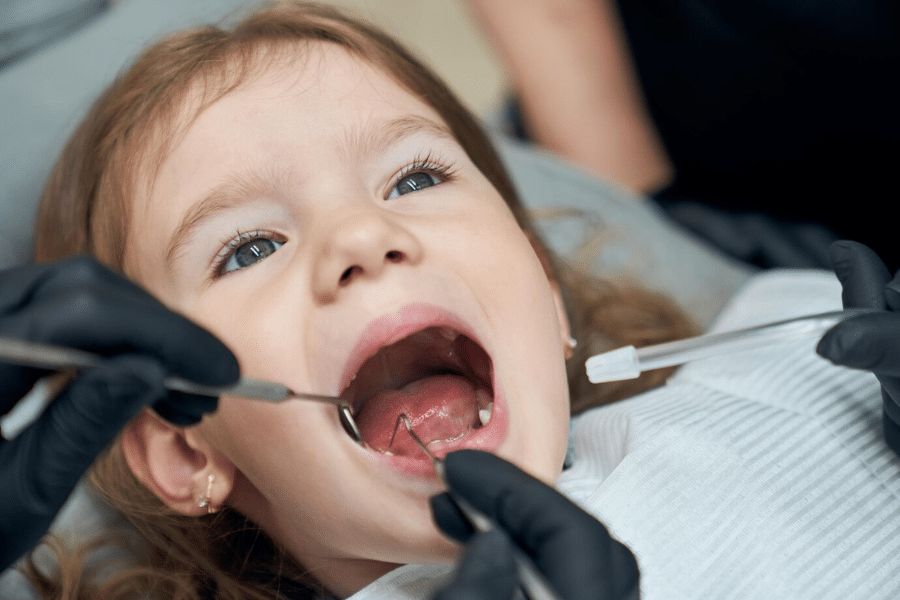Dental cavities, often referred to as caries or tooth decay, are a prevalent oral health issue among children, affecting millions worldwide. While traditional treatments like fillings and fluoride therapies are widely used, there is growing interest in natural alternatives such as colloidal silver. Let us explore the potential role of colloidal silver in reversing cavities in children, discussing its properties, how it works, and important considerations for its use.
Understanding Colloidal Silver
Colloidal silver is a suspension of tiny silver particles in a liquid base, usually water. It has been used for centuries for its purported antimicrobial and healing properties. The silver particles in colloidal silver are typically less than 100 nanometers in size, allowing them to remain suspended in the liquid without settling.
Silver has a long history of being used to fight off harmful pathogens. In recent times, scientists have been exploring its antimicrobial properties more deeply. Compared to other forms of silver, colloidal silver is found to be less harmful to the body’s cells. It has been shown to help with tooth sensitivity and is used to disinfect root canals (Tran et al., 2019).
In recent years, colloidal silver has gained popularity as a natural remedy for a range of conditions, including dental problems. Advocates of colloidal silver claim that it can help treat cavities, gingivitis, and other oral health issues by killing bacteria and promoting healing. However, it is important to note that the use of colloidal silver for medicinal purposes is controversial, and more research is needed to understand its efficacy and safety fully.
Causes of Cavities in Children
Cavities, also known as dental caries, are caused by a combination of factors, including bacteria, sugars, and poor oral hygiene. In children, several factors contribute to the development of cavities. The mouth is home to various types of bacteria, including Streptococcus mutans and Lactobacillus. These bacteria feed on sugars from food and produce acids as a byproduct. Over time, these acids can erode the tooth enamel, leading to the formation of cavities.
A diet high in sugary foods and drinks can increase the risk of cavities. Sugars from foods and drinks provide fuel for bacteria in the mouth, leading to increased acid production and enamel erosion. Inadequate brushing and flossing can lead to the buildup of plaque, a sticky film of bacteria that forms on the teeth. If not removed regularly, plaque can harden into tartar, which is more difficult to remove and can contribute to tooth decay. Children with dry mouth, either due to medication side effects or medical conditions, may be at higher risk of cavities.
For years, periodontitis has been recognized as a significant health concern in numerous populations. Chronic periodontitis typically advances at a slow to moderate pace, often linked to local factors like dental plaque, subgingival calculus deposits, and certain medical conditions such as diabetes mellitus (Kovačević et al., 2018).

How Colloidal Silver Helps in Reversing Cavities in Children
For centuries, silver has played a crucial role in oral care. Its popularity soared in the 19th century when it became a key ingredient in dental amalgams, which are used for tooth restoration. This widespread use of silver in dentistry highlights its enduring importance in maintaining oral health (Noronha et al., 2017).
In recent times, scientists have been exploring its antimicrobial properties more deeply. Compared to other forms of silver, colloidal silver is found to be less harmful to the body’s cells. It has been shown to help with tooth sensitivity and is used to disinfect root canals. Maintaining good oral health is a worldwide concern, and preventing tooth decay and plaque buildup is crucial.
There are more than 700 different types of bacteria that contribute to the formation of dental plaque. Among these, Streptococcus mutans play a key role. By using a colloidal silver gel, it is possible to hinder the growth of these bacteria, which are major culprits in plaque formation. This gel shows promise and could potentially be developed into an effective toothpaste (Tran et al., 2019).
Some studies suggest that colloidal silver may promote tooth remineralization, which is the process of restoring lost minerals in the enamel. This can help strengthen the enamel and repair early-stage cavities. By targeting bacteria in the mouth, colloidal silver may help reduce the formation of plaque, a sticky film of bacteria that can contribute to cavity development.
Colloidal silver may offer a natural and potentially effective treatment for cavities in children thanks to its antimicrobial properties. However, more research is needed to understand its effectiveness and safety fully. In the meantime, maintaining good oral hygiene practices, such as regular brushing, flossing, and dental check-ups, remains the cornerstone of cavity prevention in children.
References
Kovačević, V. M., Daković, D. R., & Bokonjić, D. R. (2018). Adjunctive effect of the colloidal silver ions solution in the treatment of chronic periodontal disease: a preliminary clinical study. Vojnosanitetski pregled, 75(12), 1216-1221.
Noronha, V. T., Paula, A. J., Durán, G., Galembeck, A., Cogo-Müller, K., Franz-Montan, M., & Durán, N. (2017). Silver nanoparticles in dentistry. Dental Materials, 33(10), 1110-1126.
Çolak, H., Dülgergil, Ç. T., Dalli, M., & Hamidi, M. M. (2013). Early childhood caries update: A review of causes, diagnoses, and treatments. Journal of natural science, biology, and medicine, 4(1), 29.
Tran, P. L., Luth, K., Wang, J., Ray, C., de Souza, A., Mehta, D., … & Reid, T. W. (2019). Efficacy of a silver colloidal gel against selected oral bacteria in vitro. F1000Research, 8.



